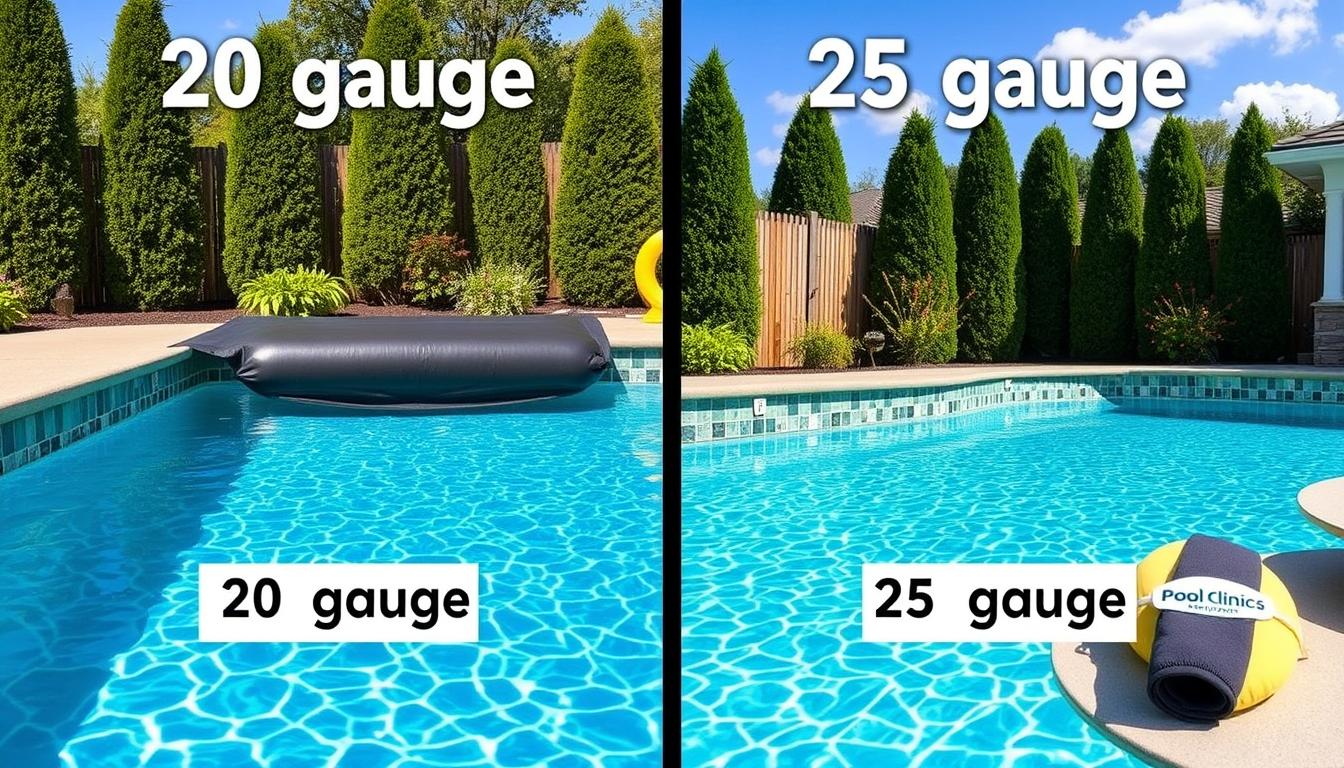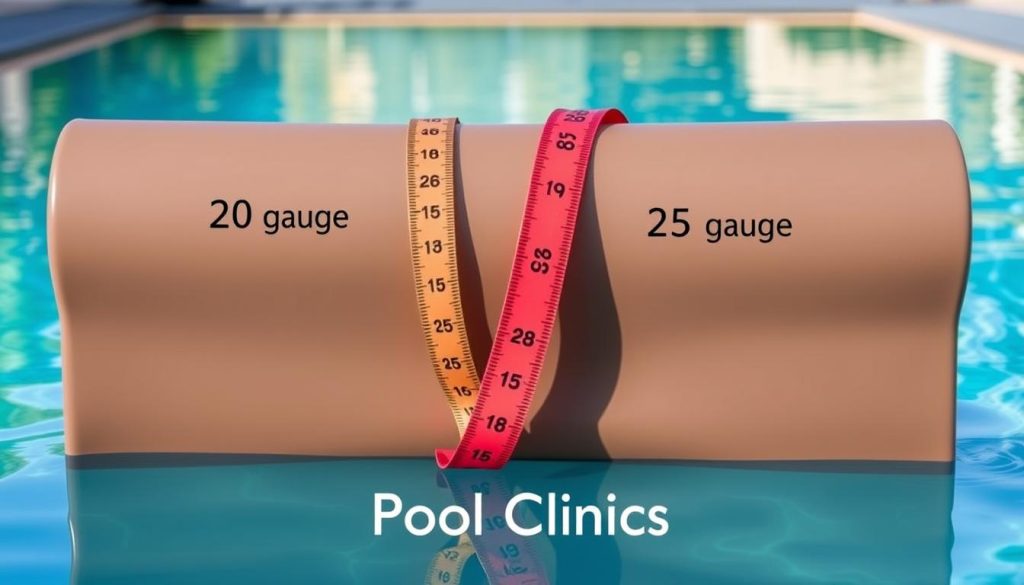
Pool owners seek liners that last long and need little upkeep. Choosing the right thickness is key for a durable pool liner. Let’s explore the differences between 20 and 25 gauge liners.
This comparison will help you pick the best option for your backyard pool. We’ll look at how thickness affects durability, resistance, and lifespan.
Liner thickness impacts durability and puncture resistance. Thicker liners cost more but offer better protection against wear and tear. Thinner liners are cheaper but may need replacing sooner.
Understanding each thickness’s pros and cons helps you choose wisely. You can find a liner that fits your budget and pool needs.
Key Takeaways
- Pool liner thickness is measured in mils (1/1000 of an inch) or gauge
- A 20 mil liner has a 20 mil bottom and a 15 mil sidewall
- A 20 gauge liner has a 20 mil bottom and a 20 mil sidewall
- A 25 mil liner has a 20 mil sidewall and a 25 mil bottom
- A 25 gauge liner has a 25 mil sidewall and a 25 mil bottom, making it the thickest option
- Thicker liners offer better puncture resistance and durability, but come at a higher cost
- Thinner liners are more affordable and easier to install, but may require more frequent replacements
Understanding Pool Liner Thickness Measurements
Pool liner thickness is vital for renovation and maintenance. It’s measured in mils or gauge, varying by manufacturer and type. These measurements impact your pool’s durability and cost.

Mil vs. Gauge: What’s the Difference?
Mil is a standard unit, equaling 1/1000 of an inch. A 20 mil liner is 0.020 inches thick. Mil measurements are consistent across manufacturers, making comparisons easy.
Gauge is less standardized and varies between manufacturers. A 20 gauge liner from one company might differ from another’s. This inconsistency makes comparisons challenging.
Comparing Sidewall and Bottom Thickness
Pool liners may have different sidewall and bottom thicknesses. Embossed liners have varying thicknesses due to patterns. Non-embossed liners maintain consistent thickness throughout.
Overall thickness combines sidewall and bottom measurements. A 15 mil sidewall and 20 mil bottom create a 20 mil liner. Thicker liners usually cost more due to increased material.
| Liner Type | Sidewall Thickness | Bottom Thickness | Overall Thickness |
|---|---|---|---|
| Standard | 15 mil | 20 mil | 20 mil |
| Heavy-Duty | 20 mil | 25 mil | 25 mil |
| Ultra-Thick | 25 mil | 30 mil | 30 mil |
Understanding mil and gauge measurements is crucial for pool liner selection. Consider sidewall and bottom thickness for overall durability. This knowledge helps you choose the best liner for your needs.
Which Is Thicker: 20 or 25 Gauge Pool Liner?
Thickness matters when choosing a pool liner for your above-ground pool. The most common gauges are 20 and 25. A 25 gauge liner has thicker sidewalls and bottom, measuring 25 mil.
Thicker liners offer better durability, puncture resistance, and longevity. These factors can greatly affect your pool’s overall performance and maintenance needs.
Durability and Puncture Resistance
A 25 gauge pool liner provides superior durability and puncture resistance. It’s better at withstanding damage from sharp objects like dog claws, branches, and glass.
Investing in a higher gauge liner reduces the need for early replacement. You’ll enjoy a longer-lasting pool liner that maintains its structural integrity over time.
Cost Comparison
Thicker pool liners cost more upfront. Each upgrade in thickness can increase the price by $200-$400.
However, consider the long-term value of a thicker liner. A 25 gauge liner may extend your pool’s lifespan, potentially saving money on future replacements.
Installation Considerations
Installing a thicker pool liner can be more challenging. The increased weight and thickness make 25 gauge liners harder to work with.
However, the extra effort during installation pays off with better protection and longevity. Proper maintenance is crucial for extending any liner’s lifespan.
Maintain appropriate water chemistry and keep dogs away from the liner. These steps help preserve your pool liner, regardless of its thickness.







